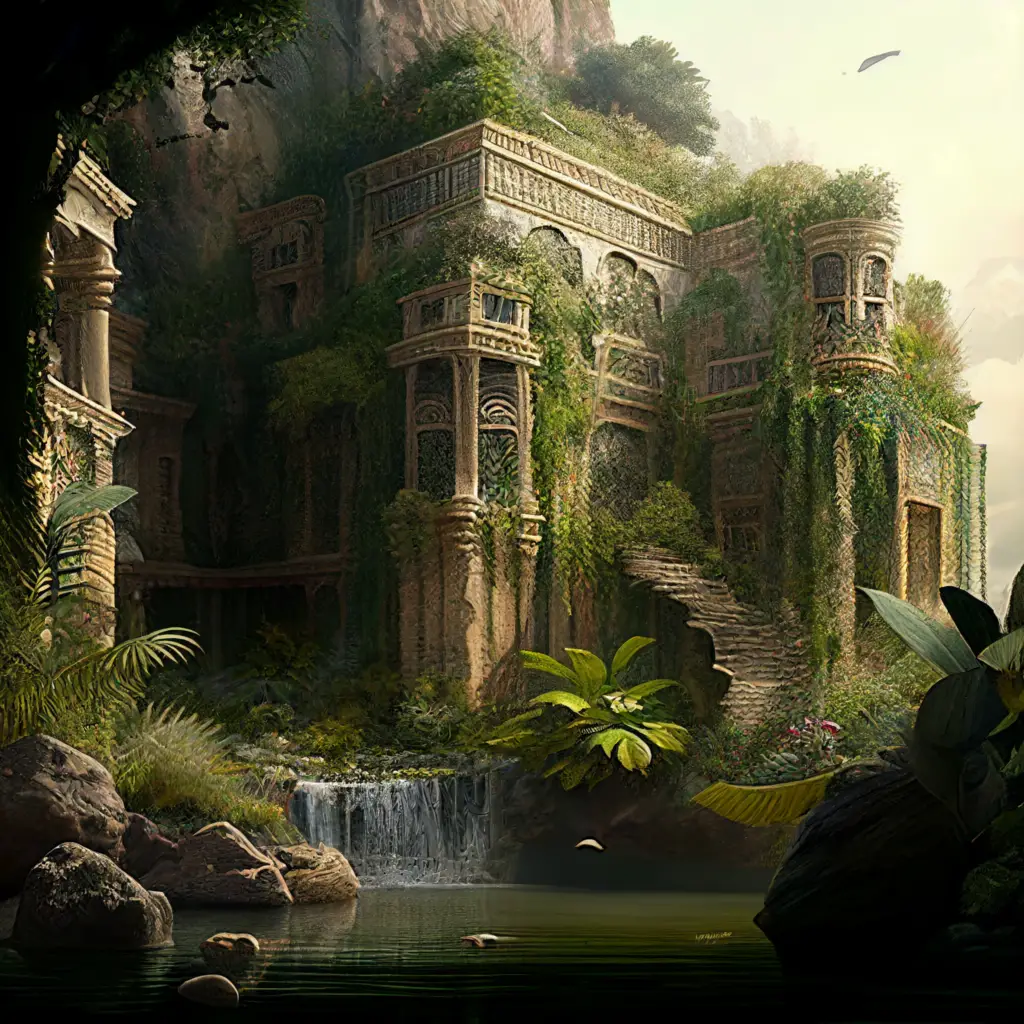
The city of Babylon was one of the most important cities in all of ancient Mesopotamia. It dates back to at least 4,000 B.C. and remained a major metropolis for many centuries after that. Not only was Babylon the capital of the Babylon empire, but it was considered the largest city in the world twice in its history, around 1770 BC and then once more in 610 BC.
And what does one do with the grandest largest city in the world? Well, according to some theories, you build an amazing monumental garden for your wife, Queen Amytis, who misses the green hillsides of her home.
Where is Babylon?
Babylon was a city located in the southwestern portion of modern-day Iraq, or southern Mesopotamia. During its peak, it was home to around 2 million people. The city was surrounded by a wall that encompassed an area of roughly 200 square miles (518 square km). There were gates at the city’s southern, northern, and eastern entrances, and they were the most heavily guarded parts of the wall.
First built by Hammurabi, the walls were strengthened later on by Nebuchadnezzar II with three entire rings of walls. The walls were thought to be so impressive and grand that the Greek historian Herodotus wrote chariot races were held atop them!
The Hanging Gardens of Babylon: What You Need to Know
The Hanging Gardens of Babylon are depicted in poems, stories, and artwork that have been passed down through the ages. Unlike some other myths and legends, there is actually a good deal of information about the gardens.
The most popular versions of the legend are those that show the garden as a symbol for great beauty and wisdom. Some scholars think The Hanging Gardens of Babylon were situated outside of the city of Babylon. But there is strong disagreement about this and is part of what makes it such a mysterious subject for archaeologists. Some think it was located elsewhere, while many believe it was just a myth in the first place.
It’s also what makes them so exciting for those who believe that they could be real.
The gardens were first mentioned in both Assyrian and Babylonian stories from the early 2nd century B.C. One of the first descriptions was by Berossus, a priest of Marduk.
The gardens consisted of a series of ramps and artificial terraces that were built into the side of a steep hill. The terraces were fed by water collected from the nearby Euphrates River. The gardens would have been quite beautiful in the springtime when the terraces were filled with colorful blooms.
Unfortunately, the “gardens” were actually more of a landscaped oasis. The area was surrounded by other buildings and walls, so it’s not like that one site was the only source of water. If real, the gardens were probably only around for a few hundred years, at most.
Sumerian Mythology and Poetry
The gardens were mentioned in both the ancient Sumerian and Akkadian stories. The stories describe how gods were said to have created the gardens to impress humans with their powers. The gardens were also linked to a specific Sumerian deity who was associated with both creation and wisdom.
In the myths, the Sumerian god Enki, who was also a god of water, created the gardens to impress his daughter, Nammu. Nammu was the goddess of the universe, and she was the personification of wisdom. She is often shown with intermingled flowers and trees, which is the perfect description for the gardens of Babylon.
The Sumerians’ Other Claim to Fame, the Ziggurat
The Sumerians were an ancient people believed to have originated in Mesopotamia. They were the ones who built the cities of the early cities, wrote the first cuneiform writings, and developed the first Mesopotamian civilizations.
The Sumerians are also credited with inventing mathematics and the wheel. Later on, Sumerians were possibly the first people to invent a city with a complex and advanced government structure.
They developed a type of government where the people were divided into classes or offices, and they were given different responsibilities within the city’s structure. The most significant building in the Sumerian cities was the ziggurat. The word “ziggurat” is derived from the Sumerian word “tu-ga-da”, which means “stepped building”. The earliest ziggurats date back to the early Bronze Age, around 3,000 B.C. They were built at a seven-story elevation, with a temple at the top. The ziggurats were much more than just buildings, though. They were also the seats of the city’s gods and the sites for important rituals.
The Destruction of Babylon and the Hanging Gardens
According to the ancient Greek historian Herodotus, Babylon was destroyed in 539 BCE by Cyrus the Great, the king of Persia. The fall of Babylon was a devastating event for the ancient world. Though the city is now in ruins, its story is still a powerful reminder of the fragility of human empires.
You might also be interested in reading about the odd history of Stonehenge.




